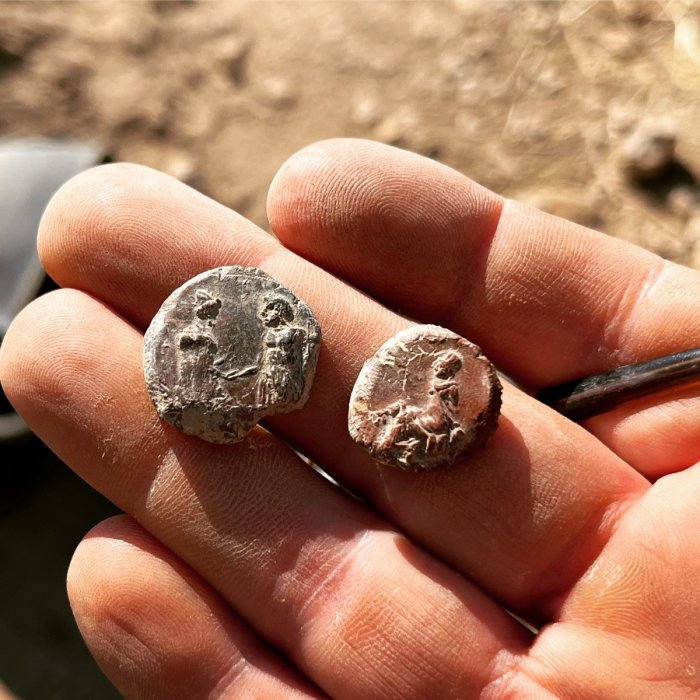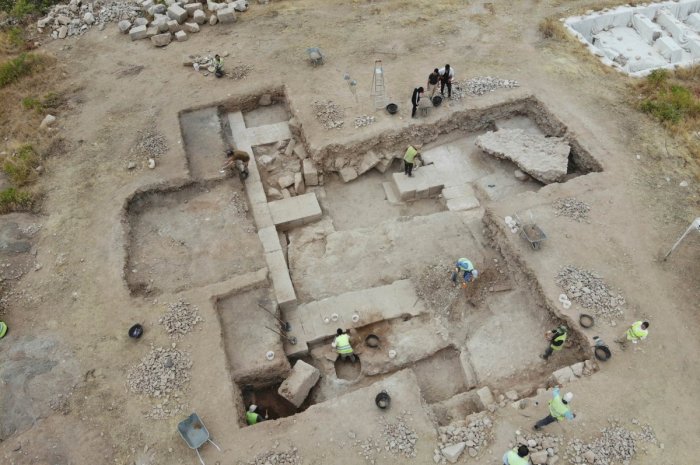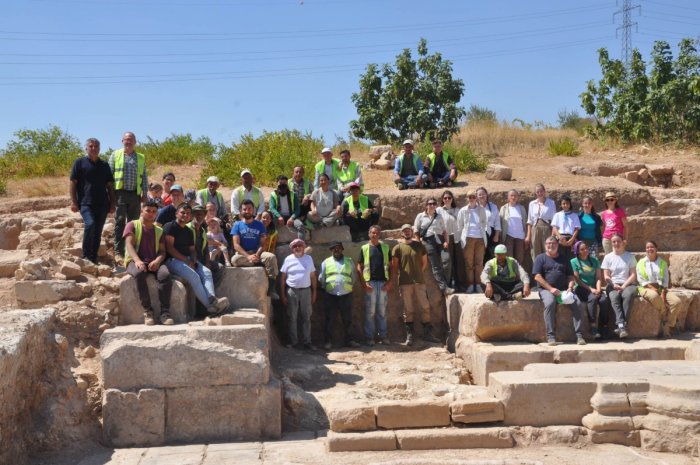Jan Bartek – AncientPages.com – Archaeologists excavating in the ancient city of Doliche in southeastern Turkey have uncovered more than 2,000 clay seal impressions. The seal impression, bullae, were small pieces of clay used in ancient times to sign documents or containers (for example, storage jugs for agricultural produce collected as a tax) intended to keep them sealed en route to their destination.

Two impressions of official seals of the city of Doliche © Asia Minor Research Center
The discovery was made by a team of University of Münster archaeologists who report they found the municipal archives of the ancient city of Doliche.
Although there were archives for storing contracts in every city, only a handful of archive buildings from the Roman Empire have been identified so far. The well-preserved seal impressions and their motifs also provide information about ancient administrative practices.

The impressions consist of stamped lumps of clay ranging in size from about five millimeters to two centimeters. They were used to seal documents made of papyrus and parchment.
“The images of the official city seals have a direct urban connection. As a rule, they show their most important deities, such as Jupiter Dolichenus, the main god of the city,” explains Professor Dr. Michael Blömer in a press statement.
The impressions of the smaller private seals show a wide range of images and symbols that reveal a lot about the cultural influence of the residents of Doliche. “The gods on the seals provide insights into people’s religious environment. Mythical figures or rare private portraits indicate a strong Greco-Roman influence,” explains the scientist.

Seal impressions from the Doliche archive © Asia Minor Research Center

The Doliche excavation 2023 team © Asia Minor Research Center
Only the lower layers of the foundations remain of the archive building, which is made of solid limestone blocks, adds Professor Dr. Engelbert Winter.
“However, they reveal a sequence of rooms that come together to form an elongated building complex,” he describes. However, the exact size cannot yet be measured. So far, the building has been proven to be eight meters wide and 25 meters long. The width of the walls also shows that it was multi-story. The international research team uncovered the building parts over a period of eight weeks last summer.
See also: More Archaeology News
The archive documents themselves were destroyed in a major fire. In 253 AD, the Persian king Šāpūr I destroyed numerous cities in the Roman province of Syria, including Doliche, as a result of a war between the Roman and Persian Empires.
The city center, which also included a bathing complex and a monumental temple, was not rebuilt after the fire. “This is a stroke of luck for archeology, as the condition from the time up to 253 AD has been preserved,” emphasize the researchers.
Written by Jan Bartek – AncientPages.com Staff Writer





